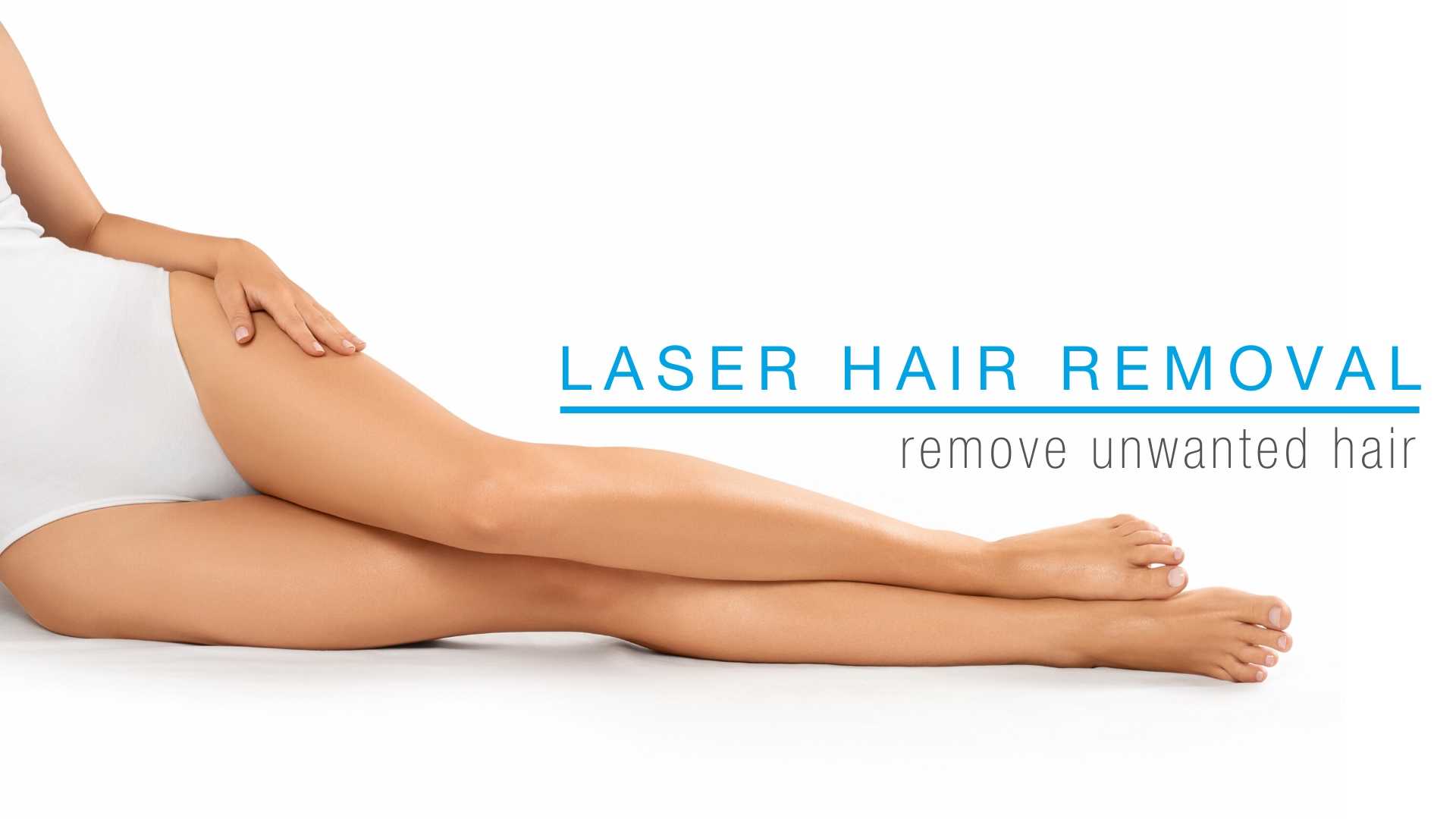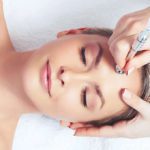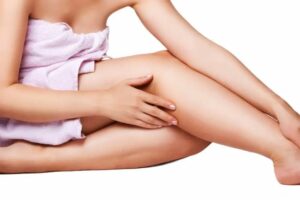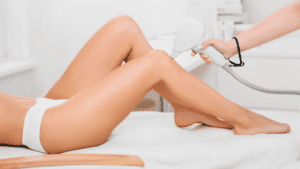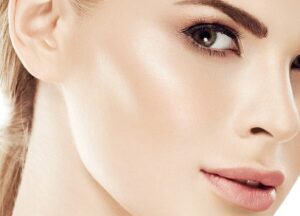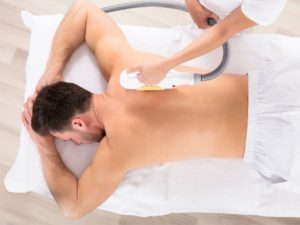Laser Hair Removal Benefits: Say Goodbye to Unwanted Hair for Good
Dealing with unwanted body hair can get time-consuming. Between shaving, waxing, and plucking, the maintenance really adds up. If you’re ready to get rid of your unwanted body hair once and for all, laser hair removal treatments might be your answer.
After just a few treatments, your unwanted hair will be permanently gone – no need for further hair removal hassle ever again!
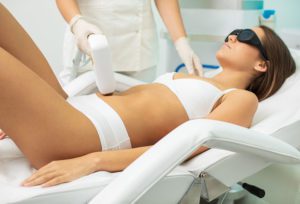
How does laser hair removal work? Does it hurt? Is it dangerous? Let’s find out!
Laser hair removal: a guide to a procedure that permanently eliminates unwanted body hair
People have been removing body hair since ancient times. In Egypt, India and Rome, smooth and delicate skin was a subject of admiration, and, of course, those who wanted to look good tried to get rid of unwanted hair. They also did this in the middle Ages – but, of course, the compositions used by ancient and medieval women of fashion and fashionistas are much inferior in efficiency and safety to the current ones. However, many still have problems with hair removal: epilation with sugar or wax causes pain, and not everyone shaves their legs less often, in addition, after using the machine, irritation or ingrown hairs may occur. These problems are solved with the help of new technologies such as laser hair removal. Laser hair removal is considered one of the most reliable and safest methods for the elimination of unwanted hair on the body.
What exactly is laser hair removal?
So how does laser hair removal work? Laser treatment removes hair using a concentrated beam of light rays – a laser. At the very core, laser hair removal is designed to target a pigment called melanin, which is one of the pigments that give your hair its color. During your laser hair removal treatment, the laser or IPL device will target the melanin in the hair follicle, which resides inside your skin. The heat will damage the follicle, slowing hair growth.
This relationship between hair removal lasers and melanin is very important because it affects how laser hair removal works, what hair color it can target, and how it can affect the skin. If the laser hair removal procedure is carried out correctly, then the skin does not get damaged at all, especially when using modern equipment. Here is a diagram of how it all works:
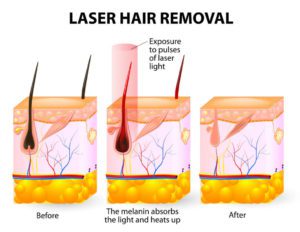
Laser hair removal advantages
Application. Laser hair removal can be done on almost any part of the body. It can be laser hair removal of the legs, armpits, upper lip, chin, bikini line, or face. Perhaps the only place where the laser should not be used is the eyelids.
Accuracy. Laser hair removal will not get any cuts, scratches, or other things, only hair is removed and nothing else.
Speed. It takes a tiny fraction of a second for the laser to heat up the melanin in the hair sufficiently. In some cases, laser hair removal on the upper lip can take only a minute. Imagine, just one minute – and all unwanted hair is gone!
Predictability. After the first procedure, the specialist, most likely, will be able to guide you on the time of the final treatment of unwanted hair – the specialist will roughly understand how your hair reacts to the laser and how many laser hair removal procedures you will need.
What are the laser hair removal benefits?
Some laser hair removal benefits:
- The FDA approved this technology for permanent hair reduction.
- You experience no downtime. Resume regular activities immediately.
- Less pain and discomfort compared to other treatment methods.
- Large areas can be treated quickly.
- Chances of scarring and pigmentation changes are minimized.
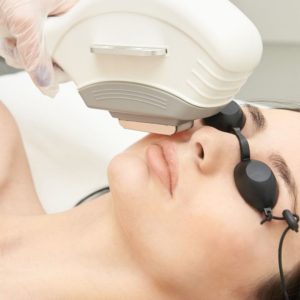
Do Laser Hair Removal Treatments Hurt?
This procedure is tolerated well by most patients, as the laser functions so quickly that only a mild sting is felt. Local anesthesia or pain medication is not required, but a topical anesthetic is an option for more sensitive areas. Pain during the laser hair removal procedure depends on where exactly the procedure is performed and your personal pain threshold. Of course, in delicate places, such as the bikini area, the laser is felt stronger than, let’s say, on the lower leg.
Laser hair removal efficiency
Keep in mind that after laser hair removal, the hair does not disappear immediately, it usually takes several (three to seven) visits to a specialist.
Why laser hair removal is not a single, but multiple procedure, and how long will it take to see the first results? The fact is that the laser affects only those hairs that are actively growing at that moment, but there are also dormant follicles, those that do not grow hair at the present time. Accordingly, during the first procedure, the hair that is in the “active phase” is burned out, and then gradually the remaining ones. On average, it turns out that 15 to 30% of hair follicles die at the first visit to the clinic.
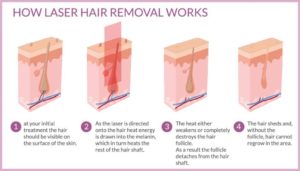
6 Things to Do Before Your Laser Hair Removal Treatments Begin
- Stop plucking and waxing
- Shave the area
- Avoid sun exposure
- Put down the bleach
- Check your medications
- Remove makeup or creams
A good specialist will most likely ask you about allergies, skin diseases, and other conditions that can affect the intensity of pain or the epilation itself. The specialist will also talk about whether it is possible to sunbathe, swim, or play sports after laser hair removal – you will get all the necessary recommendations. By the way, for women, it is better to do laser hair removal about a week after the end of the menstrual cycle: that will make the procedure less discomfort.
Laser Hair removal aftercare
Right after your laser hair removal appointment, your treated skin may be sensitive to the touch. To avoid irritation and adverse effects, follow these steps after your laser hair removal:
- Avoid direct sun exposure to the treated skin
- Apply ice or coldness to the treated area if you experience redness or swelling
- Don’t itch or rub your treated skin
- Use a gentle, unscented, SPF moisturizer
- Wear loose, soft clothing that won’t rub or irritate your skin
- Avoid thick makeup after facial treatments (wear mineral or none at all)
- Take lukewarm, not hot, showers
- Avoid tanning beds, saunas, steam rooms, and other hot environments
- Avoid intense exercise.

